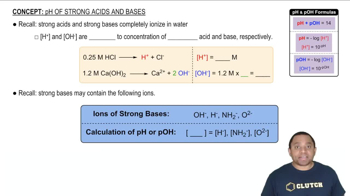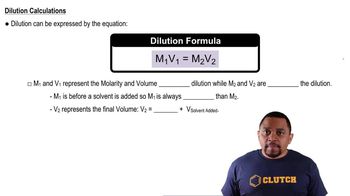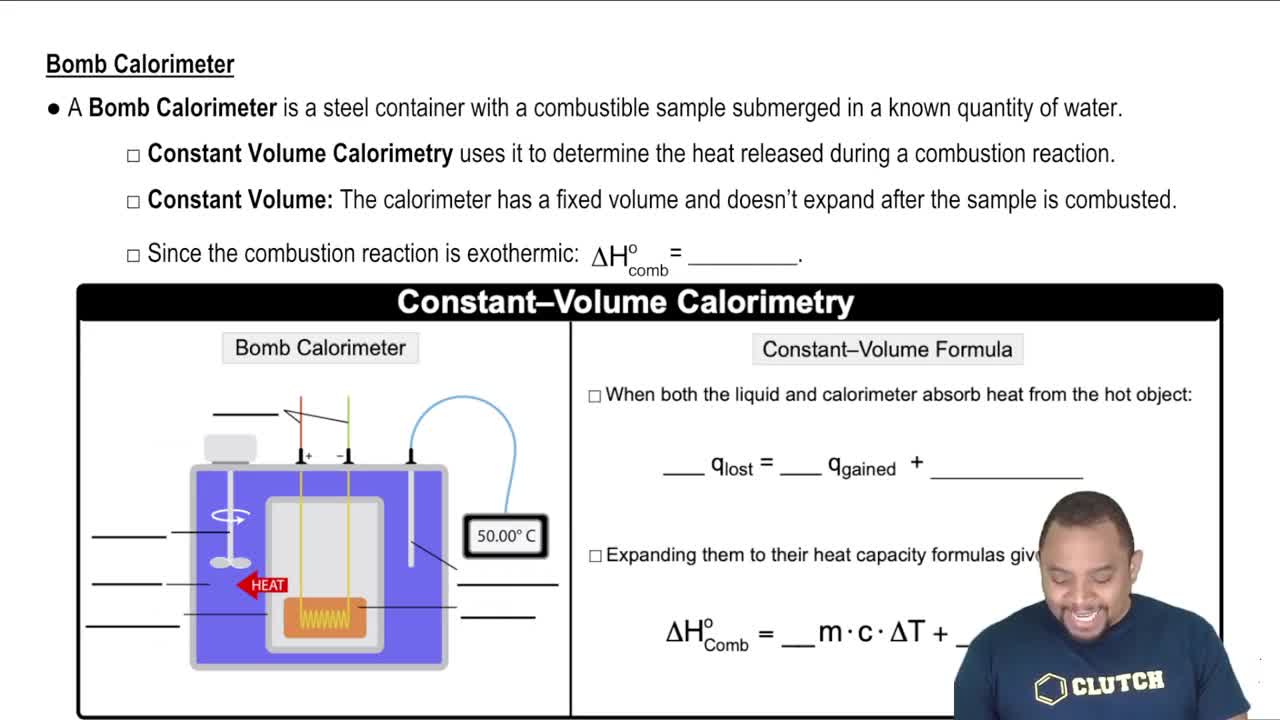Here are the essential concepts you must grasp in order to answer the question correctly.
Strong Acids and pH Calculation
Strong acids, such as HNO3 and HCl, completely dissociate in water, meaning that the concentration of hydrogen ions (H+) in solution is equal to the concentration of the acid. The pH of a solution is calculated using the formula pH = -log[H+]. For strong acids, this simplifies the calculation since the pH can be directly derived from the molarity of the acid.
Recommended video:
pH of Strong Acids and Bases
Dilution and Concentration
When a solution is diluted, the number of moles of solute remains constant, but the volume increases, resulting in a lower concentration. The dilution can be calculated using the formula C1V1 = C2V2, where C1 and V1 are the initial concentration and volume, and C2 and V2 are the final concentration and volume. This concept is crucial for determining the pH of diluted strong acid solutions.
Recommended video:
Mixing Solutions and Total Volume
When mixing two solutions, the total concentration of hydrogen ions must be calculated based on the volumes and concentrations of each solution. The total volume after mixing affects the final concentration of H+. The combined concentration can be found using the formula: [H+] = (C1V1 + C2V2) / (V1 + V2), which is essential for accurately calculating the pH of the resulting mixture.
Recommended video:
Constant-Volume Calorimetry
 Verified step by step guidance
Verified step by step guidance

